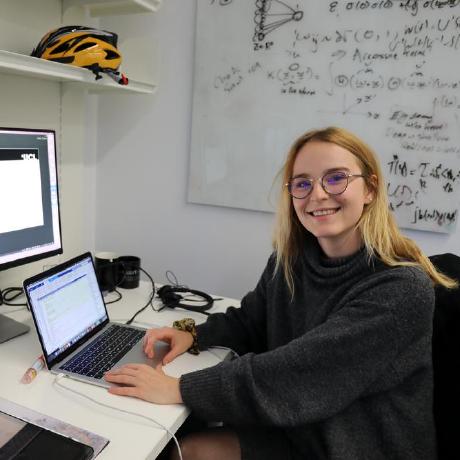The standardised environment for the hippocampus and entorhinal cortex models
Project description
NeuralPlayground: The standardised environment for the hippocampus and entorhinal cortex models.
1. Introduction
The abstract representation of space has been extensively studied in the hippocampus and entorhinal cortex in part due to the easy monitoring of the task and neural recording. A growing variety of theoretical models have been proposed to capture the rich neural and behavioral phenomena associated with these circuits. However, objective comparison of these theories against each other and against empirical data is difficult.
Although the significance of virtuous interaction between experiments and theory is widely recognized, the tools available to facilitate comparison are limited. Some important challenge to standardized coparaison are the
-
Lack availability and accessibility of data in a standardized, labeled format.
-
Lack of standard or easy ways for models to interact with the task.
-
Lack of standard or easy ways to compare model output with empirical data.
To address this gap, we present an open-source standardised software framework - NeuralPlayground - to enable adjudication between the hippocampus and entorhinal cortex models. This Python software package offers a reproducible way to compare models against a centralised library of published experimental results, including neural recordings and animal behavior. The framework currently contains implementations of three Agents, as well as three Experiments providing simple interfaces to publicly available neural and behavioral data. It also contains a customizable 2-dimensional Arena (continuous and discrete) able to produce common experimental environments in which the agents can move in and interact with. We note that each module can also be used separately, allowing flexible access to influential models and data sets.
We currently rely on visual comparison of a hand-selected number of outputs of the model with neural recordings as shown in github.com/NeuralPlayground/examples/comparison. In the future, a set of quantitative measures and qualitative measures will be added for systematic comparisonsk from any Agent, Arena, Experiments.We want to restate that this won’t constitute an objective judgment of the quality of an Agent to replicate the brain mechanism. Instead, this only allows an objective and complete comparison to the current evidence in the field, as is typically done in publications.
Altogether, we hope our framework, available at github.com/NeuralPlayground, offers a foundation that the community will build upon, working toward a shared, standardized, open, and reproducible computational understanding of the hippocampus and entorhinal cortex.
Try our short tutorial online in Colab.
2. Installation
You can create a new environment using conda, and the yml file with all the right dependencies by running
git clone https://github.com/SainsburyWellcomeCentre/NeuralPlayground/
conda create --name NPG
conda activate NPG
conda install pip
For now, install using pip for local editing and testing
pip install -e .
or
pip install -e '.[dev]'
if you want to install the dependencies for development.
3. Project
Try our package! We are gathering opinions to focus our efforts on improving aspects of the code or adding new features, so if you tell us what you would like to have, we might just implement it ;) Please refer to the Roadmap to understand the state of the project and get an idea of the direction it is going in. This open-source software was built to be collaborative and lasting. We hope that the framework will be simple enough to be adopted by a great number of neuroscientists, eventually guiding the path to the computational understanding of the HEC mechanisms. We follow reproducible, inclusive, and collaborative project design guidelines. All relevant documents can be found in Documents.
How to run a single module
Each module can be used separately to easily explore and analyze experimental data and better understand any implemented model. Additionally, different Arenas can be initialised with artificial architectures or with data from real-life experiments. We provide examples of module instantiation in the detailed jupyter notebooks found in Examples_experiment, Examples_arena and Examples_agents.
How to run interactions between modules
As shown in the jupyter notebooks Examples_agent, the Agent can interact with an Arena in a standard RL framework. The first step is to initialise an Agent and Arena of your choice. The Agent can be thought of as the animal performing the Experiment and the Arena as the experimental setting where the animal navigates and performs a task.
How to run comparisons
As shown in the jupyter notebooks Examples_comparison. We show visual comparisons between results from agents running with experimental behavior and results from the real experiment.
Check our Tolman-Eichenbaum Machine Implementation in this branch (work in progress).
4. I-want-to-Contribute
There are many ways to contribute to the github.com/NeuralPlayground/examples/comparison.
-
Implement a hippocampal and entorhinal cortex Agent of your choice.
-
Work on improving the Arena.
-
Add an Experimental data set.
All contributions should be submitted through a pull request that we will later access. Before sending a pull request, make sure you have the following:
-
Checked the Licensing frameworks.
-
Followed the PEP8 and numpy docstring style convention. More details found in Style Guide.
-
Implemented and ran Test.
-
Comment your work.
All contributions to the repository are acknowledged through the all-contributors bot. Refer to the README.md files found in each of the modules for further details on how to contribute to them.
5. Cite
See Citation for the correct citation of this framework.
6. License
More details about the license can be found at Licence.
Contributors ✨
Thanks goes to these wonderful people (emoji key):
 Clementine Domine 🎨 🧑🏫 💻 🔣 |
 rodrigcd 🎨 🧑🏫 💻 🔣 |
 Luke Hollingsworth 📖 💻 |
 Andrew Saxe 🧑🏫 |
 DrCaswellBarry 🧑🏫 |
 Niko Sirmpilatze 🚇 🚧 |
 Adam Tyson 🚧 🚇 |
This project follows the all-contributors specification. Contributions of any kind are welcome!
Project details
Download files
Download the file for your platform. If you're not sure which to choose, learn more about installing packages.
Source Distribution
Built Distribution
Hashes for NeuralPlayground-0.0.1-py3-none-any.whl
| Algorithm | Hash digest | |
|---|---|---|
| SHA256 | c438ac6e93fc3220261acfda3b080a31e989f50d7d6c6ded7e0f3375c1df31e9 |
|
| MD5 | 975ccaa401efeec38e344ea7065cbd20 |
|
| BLAKE2b-256 | a8ac32d86c43a1682cdc34e5aab95ccb4287745e120003d54bf33ae51beb6e69 |
















